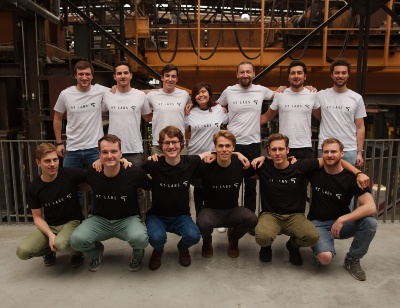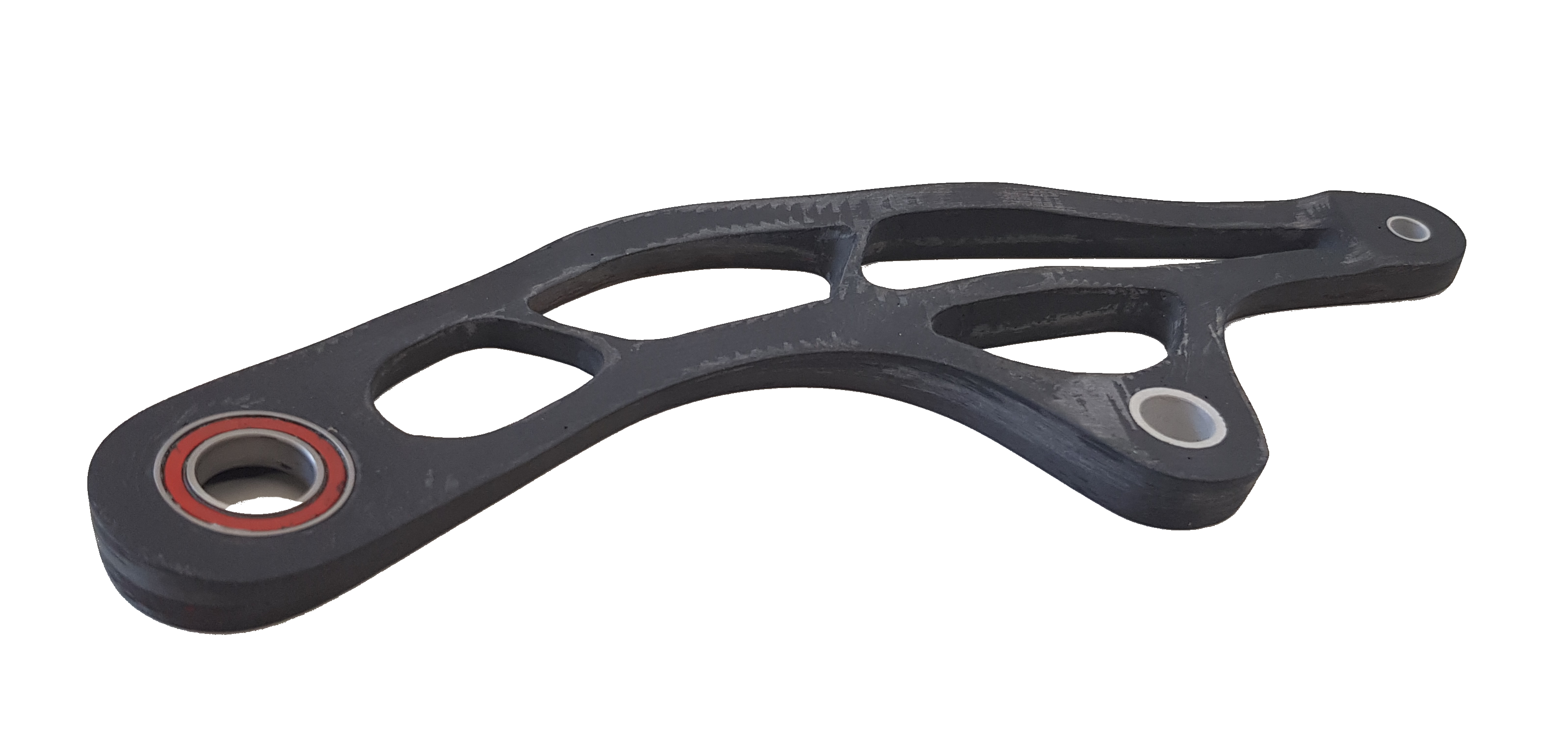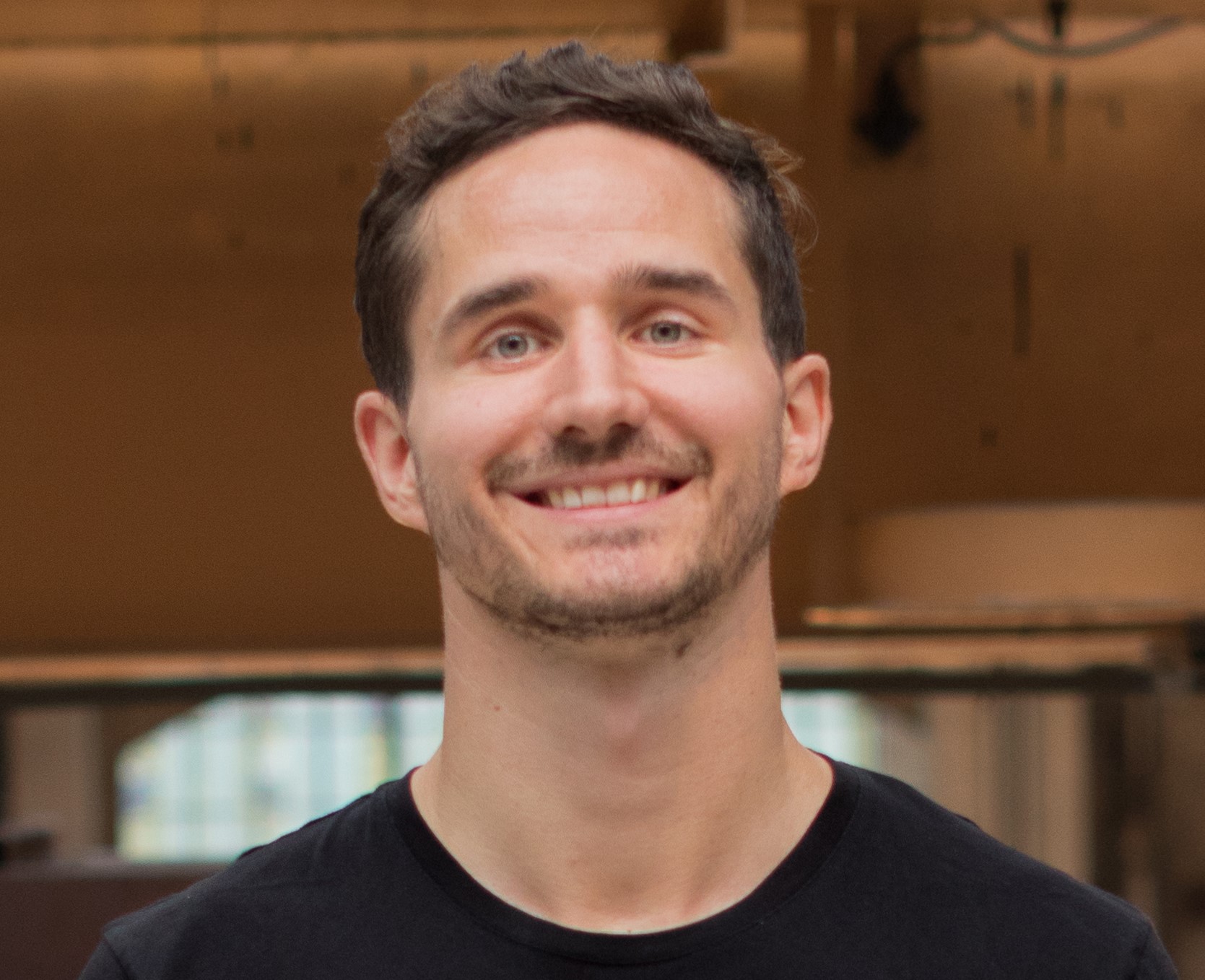Production of fiber reinforced plastics made easy
- 5/6/19 2:50 PM
- fiorella meyer
Martin Eichenhofer from 9T Labs explains potentials of new 3D printing technique

3D printing has the potential to revolutionize the manufacturing industry as objects of almost any shape can be rapidly fabricated locally. High performance plastics such as carbon fiber reinforced plastics (CFRP) are as light as plastic but as strong as steel. Yet, their conventional manufacturing is time consuming and is often done manually, inevitably leading to higher costs. 9T Labs, an ETH spin-off, has devised a new 3D printing method that overcomes these manufacturing limitations and makes such materials more accessible to new applications and industries. As Martin Eichenhofer, co-founder of 9T Labs, explains, the printing technique is “an integrated and fully automated workflow for the production of industry-grade carbon fiber composite parts.” In the workflow, continuous carbon fibers are combined with the plastic material, achieving a fiber volume content of up to 50%, which is a unique attribute for 3D printing. As opposed to metals, which are isotropic, i.e. their strength and mechanical properties are equal in all directions, carbon fibers are non-isotropic and their orientation is important. 9T Labs’ technology takes advantage of this to design lightweight parts with significantly improved mechanical performance compared to their metal and fiber composite counterparts.
The idea for 9T Labs started developing during Martin Eichenhofer’s Master’s thesis and following PhD research on additive manufacturing (3D printing). The co-founders of the company, Giovanni Cavolina and Chester Houwink actually conducted their Master’s theses within the PhD work of Martin Eichenhofer and together they realized that there was an extensive market for carbon fiber composites and a huge market opportunity by making production of such performance materials more affordable and accessible by automation. They founded 9T Labs in early 2018 and within a year, they already grew the team to 14 people.
9T Labs concentrates on building close relationships with their customers coming from various industries to develop fabrication processes further, identify use cases and case studies for series production. In this sense, 9T Labs helps to identify need gaps in design and production of performance parts, which then accelerates adoption of CFRP printing for series production. To support this effort, 9T Labs recently launched their first product, the CarbonKit, which allows customers to transform an existing 3D printer into a carbon fiber printer. “This product supports our customers to quickly understand the digital workflow and the optimization potential using 3D printing, the foundation to build together the series production applications”, says Martin Eichenhofer.

“Rocker”: optimized and manufactured CFRP mountain bike part using 9T Labs’ 3D printing technology (Picture: Martin Eichenhofer, 9T Labs).
This technology could be of particular significance for manufacturing parts for aerospace, automotive, industrial automation, leisure sports equipment as well as mobile and autonomous robotics applications. When asked whether 3D printing can replace traditional high-volume production processes, Martin Eichenhofer emphasizes that the advantage is the automated and digital workflow. Indeed, if full automation capabilities are exploited, it will become superior to conventional composite manufacturing techniques in series production. Traditional methods require the preparation of molds, which is very time intensive (2-6 weeks) and expensive. Molds are not necessary for 3D printing and this saves a lot of time, compensating for longer printing times. High volume production (>1’000 parts) can still be achieved by operating printers in parallel.
Along with replacing more traditional and manual composite manufacturing, 3D printing of CFRP also offers opportunities for saving weight and thus energy for aerospace and automotive applications. This could make it possible to lower fuel consumption of airplanes and other vehicles and thus operational costs. However, to be competitive with milled or casted metal parts, the limitation for substitution by CFRP is the higher production costs, in particular for low series production (below 10’000 parts). This is something that 9T Labs intends to change. In this sense, 9T Labs is actively contributing to the energy transition. Furthermore, conventional composite and metal component manufacturing requires a lot of energy for heating equipment like autoclaves and hot presses, which are usually poorly insulated and not used efficiently. 3D printing does not involve such tools, so that it is possible to conserve energy already during manufacturing.
This text is based on an interview with Martin Eichenhofer, co-founder of 9T Labs and PhD student at the Laboratory of Composite Materials and Adaptive Structures at ETH Zurich (CMASLab). He is also a member of Capacity Area A3.

Martin Eichenhofer obtained his Bachelor’s degree in mechanical engineering at the University of Applied Sciences Ravensburg-Weingarten, followed by a Master’s degree in mechanical engineering at ETH Zurich and a post-graduate Master’s degree in economics at the Collège des Ingénieurs. He is specialized in functional design, processing and mechanics of composite materials.
Find out more on the 9T Labs website.
!!! This document is stored in the ETH Web archive and is no longer maintained !!!